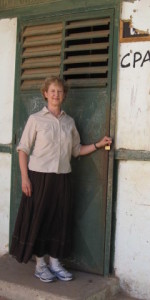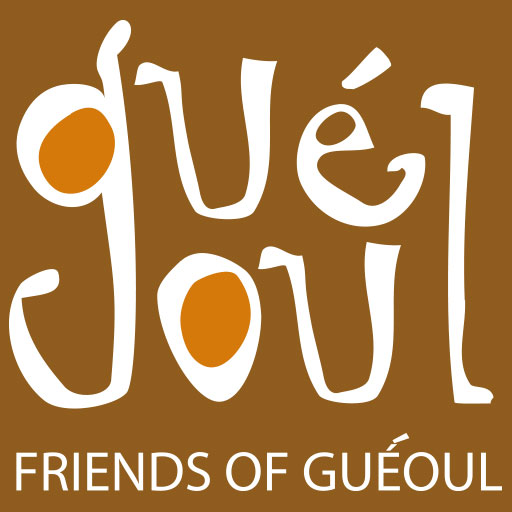 Traveling to a third-world country is an adventure! Guéoul, Sénégal—a world where transportation is by donkey or by foot. Where the day’s meal is slow-cooked on an open fire. Where vivid people move slowly and savor time with their friends and relatives. Where there’s sand, out at the edge of the Sahara. Where people live in thatch homes. Where life is harsh, hearts are kind and people live in peace.
Traveling to a third-world country is an adventure! Guéoul, Sénégal—a world where transportation is by donkey or by foot. Where the day’s meal is slow-cooked on an open fire. Where vivid people move slowly and savor time with their friends and relatives. Where there’s sand, out at the edge of the Sahara. Where people live in thatch homes. Where life is harsh, hearts are kind and people live in peace.
In January 2010, I traveled to the village of Guéoul to volunteer with Friends of Guéoul to help create a new arts program for our scholarship girls.
Since the government schools do not provide art or music, a volunteer program was born in 2009 to enrich the girls’ education with art. I was one of five volunteers to continue the effort in 2010, both with our girls and with co-ed classes.
Judy Beggs, Executive Director, has led many visits to Guéoul. I found this trip well organized and the experience of a lifetime.
In the Sénégalese capital Dakar, we experienced the bustling Sandiga street market. I was amazed at the variety of dress, from the men’s flowing African robes to Western jeans or business suits and the African women’s brightly patterned dresses with long skirts, short sleeves and a swath of cloth tied around their heads.
On the way from Dakar to Guéoul, we shared the road with horse and donkey carts, public buses with men hanging off the back and private cars (station wagons) for hire that carry seven passengers.
We arrived in Guéoul to much fanfare. The children were chanting “JoJo,” Judy’s name there. The people were wonderful, friendly and welcoming. We stayed in the upper story of Khadime N’Dir’s house, which was built for the use of Friends of Guéoul. Khadime is the uncle of one of our Board members, Abdou N’Dir. He’s also head of the household which includes three families plus the grandmother. Each family and the grandmother have their own rooms, and share a living room and a large foyer, which doubles as a TV room and the children’s sleeping area. The kitchen is a separate building in the cement courtyard. The food is cooked on a one-burner gas canister in the courtyard where the women sit to prepare the food. Attached to the kitchen is the wash room with a bucket for bathing, and attached to the wash room is the squat toilet.
Our bathroom included a cold-water shower and a real sit-down flush toilet. Our space included three bedrooms and a large open area—our living and dining room. All rooms are open to the outside, although the bedrooms have shutters. There are no windows, heat or air conditioning. We shared the second floor with some storerooms and 105 baby chickens. The latter is an entrepreneurial effort by Khadime to supplement his income.
We spent our days organizing the art projects; sorting gifts for the girls, teachers and host family and, of course, presenting the “beaux arts” to the coed classes and the scholarship girls. The coed classes, teachers and even the school directors (principals) got involved and enjoyed the painting, sponge painting, friendship bracelets and collages.
The most exciting part was the gift of an unused room and desks at one of the schools for the use of Friends of Guéoul. There we formed the Noos Club (Fun Club) where the scholarship girls can work on their art projects. A local teacher, Baye Thierno Ndiaye, and his wife Diatou have been working with the girls all year both in art and in scholastic endeavors. Baye and Judy visited each of the girls in their homes. I accompanied them on two visits. One of our girls lives in a one-room thatched hut with her aunt and uncle and a younger child. How precious her education will be!
My two-week adventure in Guéoul concluded with an intriguing lesson of how to cook Mafe Gerte, a wonderful beef dish with vegetables and a fantastic peanut sauce, and an exciting drumming and dancing lesson.
I arrived back home feeling happy, culturally educated, and fortunate to have helped create a much-needed arts and scholastic program for our girls. I have memories for a lifetime, which have changed me forever.
